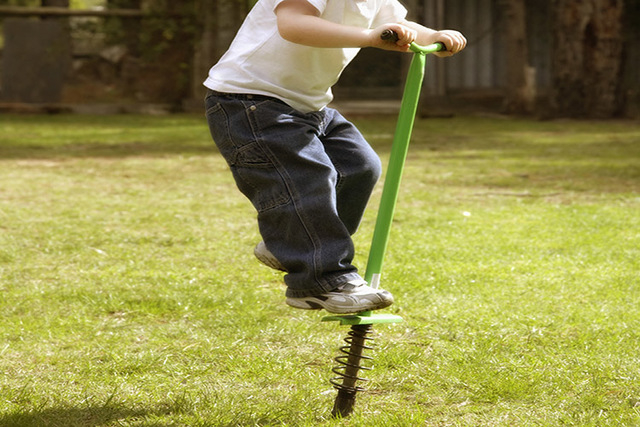For some, it’s high tech gifts, for others, it’s a pogo stick

When I was a scrawny 8-year-old living in Cocoa, Fla., my Christmas gift desire was a pogo stick.
Some readers may not even remember pogo sticks, but they were BIG in the late 1950s.
It seemed simple enough. Take a pole, cut it in two, add a spring joining the two sections of the pole, add footrests and jump on the footrests and you’re off and bouncing high.
Looking back, Sigmund Freud might make something out of kids who wanted to jump up and down on a stick and go as high as possible in the air or shoot for distance, but I don’t think that was the appeal.
No idea what it cost, but it was at the top of my wish list and that of the Jenkins sisters across the street.
Christmas morning finally arrived, and we all got our pogo sticks. We raced out to our driveways. The time had come to demonstrate our skills.
The Jenkins girls leaped on theirs and began bouncing all over their driveway and into the street.
I leaped on mine, and immediately fell off.
Mine was stiff. Theirs was soft. Mine was an earlier version with straight pole without handles. Theirs was the latest model with handles at the top. They had no trouble doing what pogo sticks were meant to do. They bounced around with abandon.
I just kept leaping and falling off, leaping and falling off. Backwards, forwards, sideways.
For days.
For eight days to be exact. Every chance I could, I went outside to try.
My pogo stick was so stiff, I couldn’t get it to slide down. And it was taller than I was.
I envied the Jenkins girls. They had red hair, and their pogo sticks worked.
I blamed the pogo stick.
But I didn’t give up.
On New Year’s Day, I conquered that pogo stick, even though I probably fell over hundreds of times over those eight days, scraping my legs and hurting my pride.
The pogo stick taught me that ultimately, if I remained determined and kept practicing, I would prevail. Without anyone telling me, I learned that the easiest effort wasn’t always the most gratifying.
When I went searching for the history of pogo sticks, I discovered they are hot items again — a renaissance and a competitive sport — Xpogo or extreme pogo. Photos show people jumping as high as 10 feet off the ground. (I was lucky to make 10 inches.)
The pogo stick was patented in 1920 and described as a “spring-end hopping stilt.” In 1955, there was a version with an upright vertical stick. (That was the one my folks bought, and I’m lucky I didn’t knock out all my teeth.)
The Jenkins girls got the 1957 patented model, which added two handles and was shorter than mine and easier to mount. (Maybe a little Freud here, certainly pogo envy.)
Does a computer device for game playing match a pogo stick? Does it teach life lessons?
Perhaps. But today, conquering a computer seems a lot more like a work necessity than a toy.
Maybe my 8-year-old self, with skinny arms and legs all brown from the Florida sun, with a Buster Brown haircut, would be thrilled to find a kid’s tablet under the tree, challenging me mentally if not physically.
Maybe.
I shouldn’t oversell this. The pogo stick didn’t set me on the path of a lifetime of competitive athleticism. I ended up as an athletic dilettante, trying a little of everything — swimming, kayaking, windsurfing, soccer, horseback riding, fencing and tennis. (Forget softball and basketball. I wore glasses and didn’t like anything flying toward my face.)
But that pogo stick couldn’t break my spirit and it taught me a life lesson about persistence.
I doubt the Jenkins girls’ pogo sticks did that.
Jane Ann Morrison’s column appears Thursdays. Email her at jmorrison@reviewjournal.com or leave a message at 702-383-0275. Follow her on Twitter @janeannmorrison.